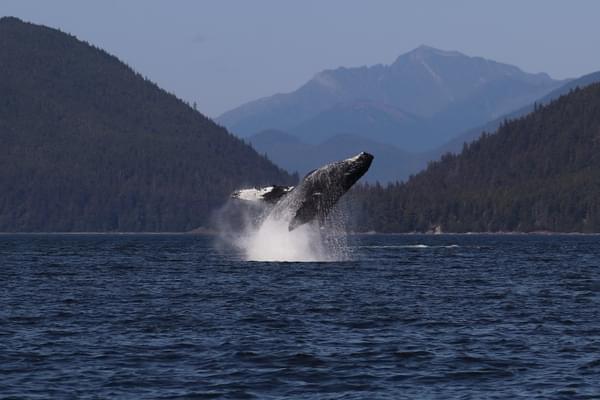The State of Cetaceans 2025, ORCA’s flagship annual report reveals where whale, dolphin and porpoise populations are improving and where urgent action is needed - drawing on one of the world’s largest citizen science survey programmes from ferries and cruise ships. This year’s edition delivers record coverage, fresh UK population estimates and practical, ship-ready solutions to cut collisions, giving policymakers and the maritime sector a clear route to create Safe Ocean Spaces.
Cetaceans are more than charismatic ocean giants, they are a key indicator of ocean health. ORCA’s eighth edition of The State of Cetaceans brings nearly two decades of citizen-powered science together to show where whales, dolphins and porpoises are doing well and where they need our help most. It’s a celebration of citizen scientists as much as it is a science report. Our incredible army of trained volunteers gathers rigorous data from ferries and cruise ships around the world and helps to shape real and lasting conservation decisions.
The scale is staggering. Since 2006, ORCA has completed 4,511 surveys, recording 314,154 individual animals across 52 species. In 2024 alone, teams logged 377,613 km of survey effort (the biggest year on record), spending 13,268 hours on watch and extending coverage to every ocean from the Arctic to the Southern Ocean. Cumulatively, that’s 1.62 million km of survey track - the equivalent of travelling over 40 trips around the equator!
Last year’s surveys recorded 51,514 individual animals, identifying 46 species, with eight species added to the ORCA dataset for the first time, including Gray’s beaked whale and ginkgo-toothed beaked whale. A testament to expanded high seas effort and the value of platforms of opportunity. Warm-water and Southern Hemisphere endemics (think spinner dolphins, Bryde’s whales, Commerson’s dolphins) featured more prominently, reflecting broader tropical and sub-Antarctic coverage.
Using 19 years of ferry-based line-transect data and density surface modelling, the report provides fresh abundance estimates for five species in UK and nearby waters. Highlights include: harbour porpoise ~10,622 individuals in the North Sea (with hotspots in shallower southern areas); common dolphin ~18,236 in the English Channel; white-beaked dolphin ~2,278 in the North Sea, with a clustering in the northwest; minke whale ~251 in the central-western North Sea; and bottlenose dolphin ~1,213 in the North Sea and 1,044 around the Northern Isles. These preliminary figures will be refined as more environmental covariates and year-to-year dynamics are incorporated, but they already show the power of long-term, volunteer-led datasets to inform protection.
ORCA’s data feeds directly into the global mapping of Important Marine Mammal Areas (IMMAs), a real-time atlas guiding where human disturbance must be minimised. That evidence pipeline is influencing policy, including the first IMO Particularly Sensitive Sea Area focused on reducing large whale vessel strikes in the Western Mediterranean. With global vessel traffic projected to triple by 2050, this visibility is critical.
Vessel strike remains one of the biggest threats to large whales and the science is clear: slower speeds and avoiding hotspots are the measures that work. ORCA is tackling the problem on multiple fronts: behaviour research (e.g., tracking whale - ship interactions in Alaska and fine-scale fin whale behaviour in the Bay of Biscay), geofencing high-density areas in the Southern Ocean with partners like the British Antarctic Survey and HX, and training bridge crews and itinerary planners. To date, over a thousand crew from a dozen shipping companies have completed ORCA’s vessel strike mitigation training, with tailored polar courses delivered through AECO.
This year’s The State of Cetaceans shows the momentum we’ve gained, evidenced by bigger survey coverage, sharper insights, and practical solutions rolling out at sea. Most of all, it proves what’s possible when science, shipping and citizens pull together - creating safer ocean spaces for whales and dolphins, and healthier seas for us all.
If you’d like to be part of the story, then we’ve made it as easy and accessible as possible by supporting surveys, joining OceanWatchers, or helping champion vessel strike mitigation - this is the moment. The whales are showing us where they are. We just have to listen and act. And you can be part of that.

ORCA wouldn't be able to protect whales and dolphins without the hard work and dedication of an army of incredible citizen science volunteers. Our e-learning courses mean that it's easier than ever before for you to get involved in our conservation work, no matter your background. Visit learn.orca.org.uk today to find out more about our courses and see how simple it is to play your role in protecting these amazing animals

